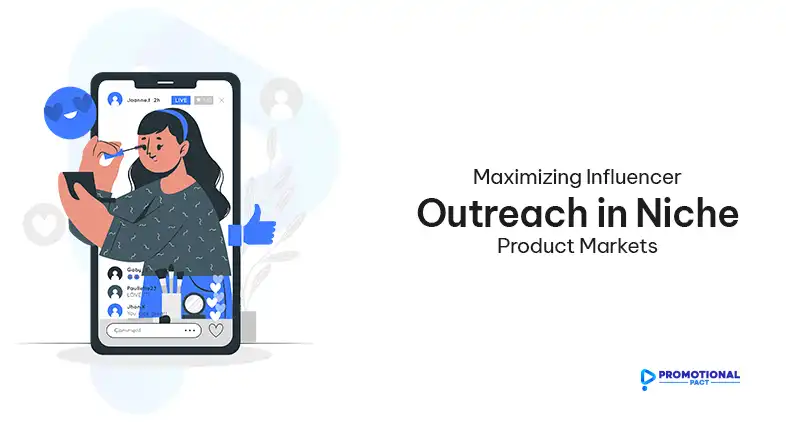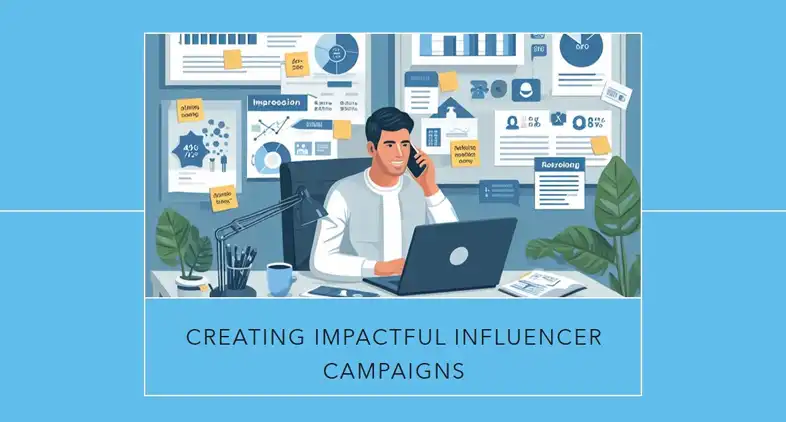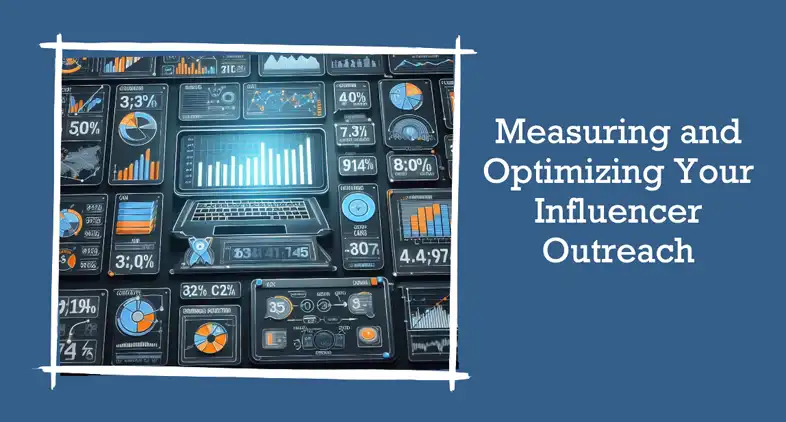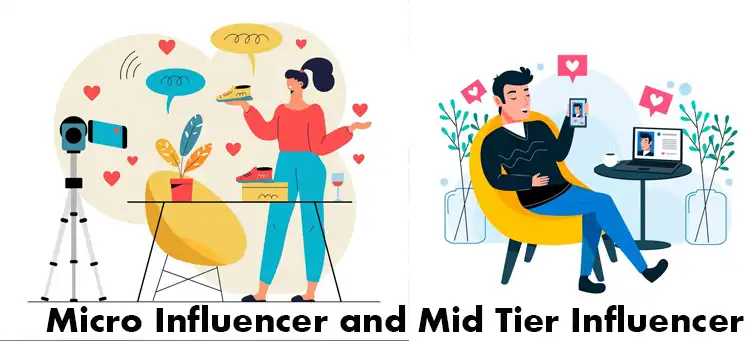In today’s crowded digital landscape, brands are constantly seeking innovative ways to cut through the noise and connect with their target audiences effectively. For niche product markets, where consumers are highly specialized and discerning, influencer marketing has emerged as a powerful strategy.
By collaborating with influential voices within their niche, brands can tap into engaged and invested communities, fostering credibility, and trust, and ultimately driving conversions.

Defining Niche Products and Influencers

Defining “niche products” and their unique marketing challenges
Niche products cater to specific interests, needs, or preferences that fall outside the realm of mass-market offerings. These highly specialized products often cater to a dedicated consumer base with unique demands and a willingness to pay premium prices for tailored solutions. However, reaching these niche audiences through traditional marketing channels can be challenging, as they are typically less responsive to broad, untargeted messaging.
Identifying different types of influencers
The influencer landscape is diverse, featuring various influencer types based on their following size and engagement levels. Micro-influencers, with follower counts ranging from 10,000 to 100,000, often have highly engaged and niche-specific audiences. Macro-influencers, boasting over 100,000 followers, command larger audiences but may have lower engagement rates. Nano-influencers, with fewer than 10,000 followers, are emerging as a powerful force, leveraging their hyper-engaged communities and authentic connections.
Understanding the niche influencer landscape
Niche influencers thrive on various platforms, from specialized social media channels and forums to niche-specific blogs and websites. These influencers often cultivate engaged communities around shared interests, fostering discussions, sharing insights, and driving product trends. To effectively navigate this landscape, brands must understand key engagement metrics, such as comments, shares, and user-generated content, which can provide valuable insights into an influencer’s true influence and audience resonance.
Researching & Finding the Right Influencers

Defining your target audience and their pain points
Before embarking on an influencer outreach campaign, it’s crucial to have a deep understanding of your target audience within the niche market. Define their demographics, psychographics, interests, and specific pain points or desires that your product addresses. This understanding will guide your influencer selection process, ensuring alignment between the influencer’s audience and your target consumers.
Utilizing tools and platforms for influencer discovery
Various tools and platforms exist to streamline influencer discovery and vetting processes. Leveraging hashtag research, social listening tools, and dedicated influencer marketing platforms can help identify potential influencers within your niche. These resources provide insights into influencers’ audience demographics, engagement rates, and content themes, enabling targeted outreach efforts.
Assessing influencer fit
Beyond follower counts, it’s crucial to assess an influencer’s fit with your brand and campaign objectives. Evaluate their alignment with your brand values, messaging, and aesthetic. Analyze their audience demographics and engagement rates to ensure they resonate with your target consumers. Additionally, consider their content style and tone, ensuring a natural and authentic fit for your product or service.
Crafting a Compelling Outreach Message

Personalizing your message
One of the most effective ways to capture an influencer’s attention is through personalized outreach messaging. Demonstrate an understanding of their interests, content themes, and audience preferences. Tailor your message to resonate with their unique voice and style, increasing the likelihood of a positive response and potential collaboration.
Highlighting the benefits
Successful influencer partnerships are built on mutual benefit. In your outreach message, clearly articulate the advantages of collaboration for both parties. For influencers, this may include product seeding, compensation, exclusive access to new launches, or opportunities to expand their reach and credibility. For your brand, highlight the potential for targeted exposure, increased credibility, and elevated brand awareness within the niche community.
Offering value propositions
While financial compensation is often a consideration, savvy influencers seek partnerships that offer additional value propositions. Consider offering influencers early access to new products, exclusive behind-the-scenes content, or opportunities to co-create limited-edition collections. These value-added offerings can differentiate your brand and foster long-term, mutually beneficial relationships.
Building Authentic Relationships with Influencers

Engaging with their content
Building authentic relationships with influencers requires genuine engagement and consistent effort. Actively engage with their content, leaving thoughtful comments, sharing their posts, and demonstrating a genuine interest in their work and community. This consistent engagement fosters a sense of familiarity and trust, laying the foundation for potential collaborations.
Offering support and collaboration opportunities
Extend your relationship beyond transactional campaigns by offering support and collaboration opportunities that align with the influencer’s interests and goals. This could include co-hosting events, creating educational resources, or amplifying their personal projects or initiatives. By supporting their broader endeavors, you position your brand as a trusted partner and ally within the niche community.
Fostering long-term partnerships
Successful influencer outreach in niche markets often relies on cultivating long-term partnerships built on trust and mutual respect. Treat influencers as valued collaborators, respecting their creative autonomy and providing opportunities for open feedback and collaboration. By fostering transparent and respectful relationships, you increase the likelihood of sustained success and continued brand advocacy within the niche community.
Developing Effective Influencer Campaigns

Setting clear goals and objectives for your campaign
Before launching an influencer campaign, establish clear goals and objectives aligned with your overall marketing strategy. These goals can range from increasing brand awareness and fostering community engagement to driving website traffic and generating sales conversions. Clearly defined objectives will guide your influencer selection, content strategy, and performance measurement.
Collaborating with influencers on content creation
Effective influencer campaigns rely on authentic, engaging content that resonates with the influencer’s audience. Collaborate closely with influencers to develop content concepts that align with their voice, style, and audience preferences. Provide creative briefs and guidelines while allowing influencers the freedom to infuse their unique perspectives and authenticity into the final content.
Providing clear campaign guidelines
While providing clear campaign guidelines is essential, it’s equally important to respect influencers’ creative freedom and expertise. Establish a balance between brand messaging and influencer authenticity, allowing them to create content that feels genuine and resonates with their audience. This approach fosters a collaborative partnership and increases the likelihood of successful campaign outcomes.
Measuring and Optimizing Your Influencer Outreach

Utilizing tracking tools and analytics
Measuring the success of your influencer outreach efforts is crucial for optimizing future campaigns and demonstrating return on investment (ROI). Leverage tracking tools and analytics platforms to monitor key performance indicators (KPIs) such as reach, engagement rates, website traffic, and sales conversions. These data-driven insights will inform strategic decision-making and campaign refinements.
A/B testing different influencer partnerships
To continually optimize your influencer outreach strategies, embrace a data-driven approach through A/B testing. Experiment with different influencer partnerships, content formats (e.g., product reviews, tutorials, sponsored posts), and messaging approaches. Analyze the performance data to identify the most effective tactics and refine your strategy accordingly.
Adapting your strategy based
Continuously adapt and refine your influencer outreach strategy based on the insights gleaned from performance data and influencer feedback. Actively seek feedback from your influencer partners, as they have unique perspectives and valuable insights into their audience’s preferences and engagement patterns. By incorporating this feedback into your strategic planning, you can create more impactful and resonant campaigns.
Bonus: Additional Tips and Strategies
Leveraging user-generated content from micro-influencers
User-generated content (UGC) can be a powerful asset for niche product marketing, as it fosters authenticity and social proof. Encourage micro-influencers and brand advocates within your niche community to share their experiences and product reviews through UGC campaigns. This organic content can amplify your reach and credibility while fostering a sense of community around your brand.
Partnering with other niche brands for cross-promotional campaigns
Consider partnering with complementary niche brands for cross-promotional influencer campaigns. By leveraging shared audiences and influencer networks, you can expand your reach and exposure while offering added value to both brands and their respective influencer partners. These strategic collaborations can be particularly effective in niche markets with overlapping consumer interests.
Staying up-to-date on industry trends
The influencer marketing landscape is constantly evolving, with new trends, platforms, and best practices emerging regularly. Stay informed by subscribing to industry publications, attending relevant conferences and webinars, and actively participating in online communities focused on influencer marketing. This continuous learning will ensure your strategies remain current, effective, and aligned with the latest developments in the field.
Sum Up
Maximizing influencer outreach in niche product markets requires a strategic and multi-faceted approach. By understanding your niche audience and the influencer landscape, identifying the right influencer partners, crafting compelling outreach messages, building authentic relationships, developing effective campaigns, and continuously measuring and optimizing your efforts, you can unlock the power of influencer marketing to drive targeted awareness, credibility, and conversions within your niche community.
Frequently Asked Questions (FAQ)
How do I determine the right compensation for influencers?
Influencer compensation can vary greatly depending on factors such as their following size, engagement rates, and the scope of the collaboration. As a general guideline, consider industry benchmarks and your campaign objectives. For micro-influencers, product seeding or a modest flat fee may be appropriate, while macro-influencers often command higher rates or revenue-sharing models.
Can I work with influencers outside my geographic region?
Absolutely! The beauty of influencer marketing is its global reach. While it’s important to consider cultural nuances and language barriers, working with influencers from different geographic regions can be an effective way to expand your brand’s reach and tap into new niche markets.
How can I ensure compliance with regulations and guidelines?
As influencer marketing continues to evolve, various regulations and guidelines have emerged to promote transparency and protect consumers. Stay informed about relevant laws and industry guidelines, such as the Federal Trade Commission’s (FTC) Endorsement Guidelines in the United States or the Advertising Standards Authority (ASA) guidelines in the UK.
What should I do if an influencer campaign underperforms?
If an influencer campaign underperforms, it’s important to analyze the data and feedback to identify potential areas for improvement. Review the campaign objectives, influencer selection, content strategy, and audience engagement. Engage in open dialogue with the influencer partner to gain insights and adjust your approach accordingly. Additionally, consider A/B testing alternative strategies or pivoting to different influencers or content formats.

